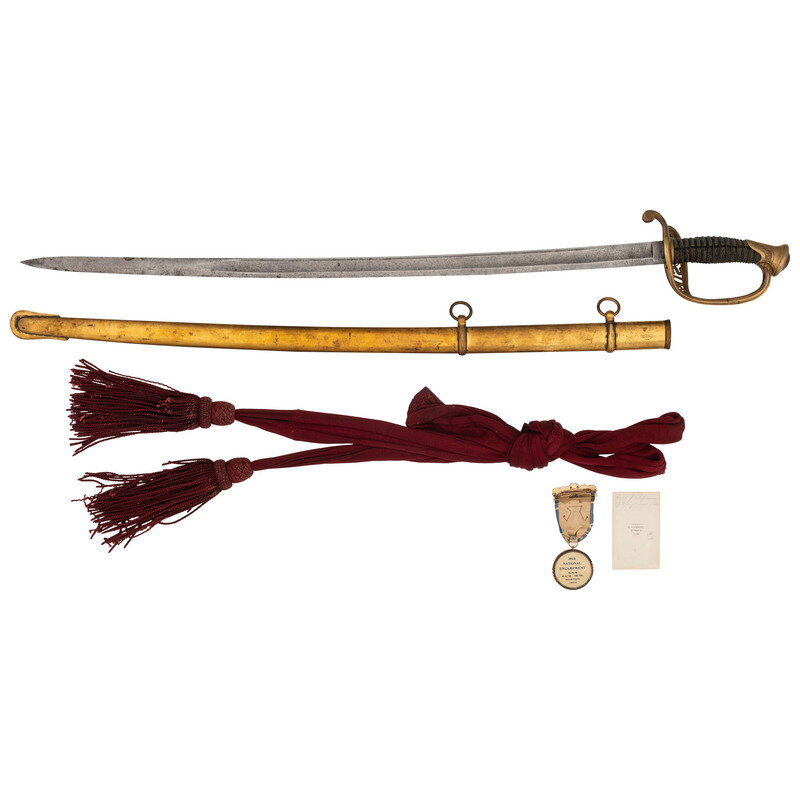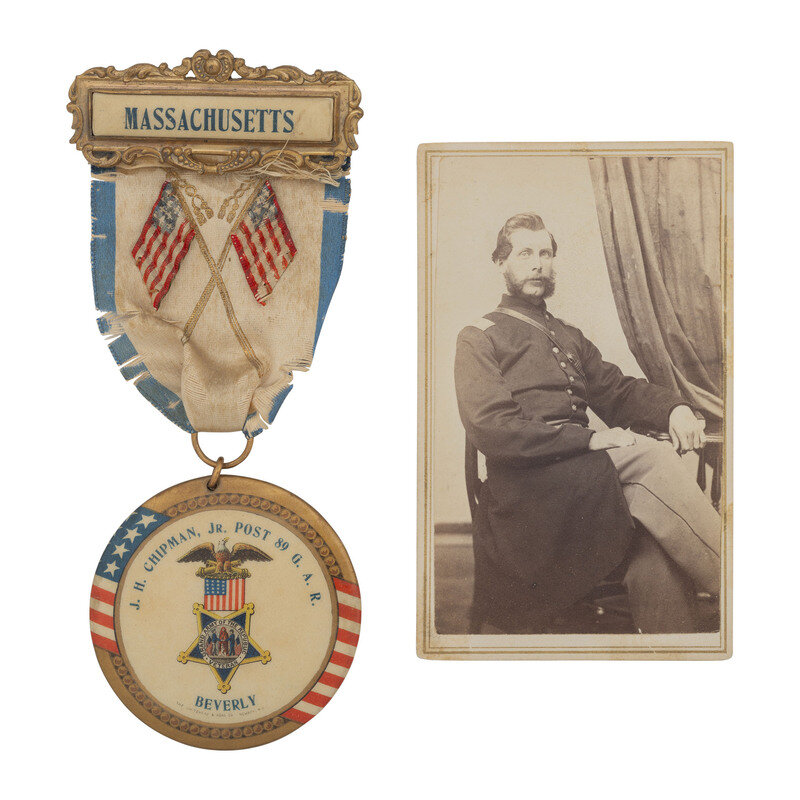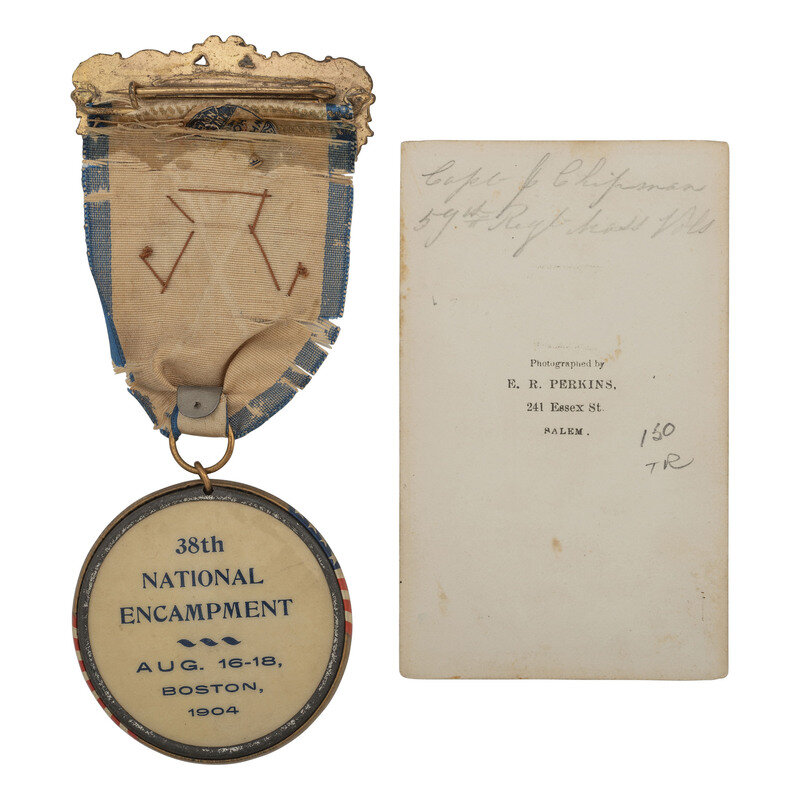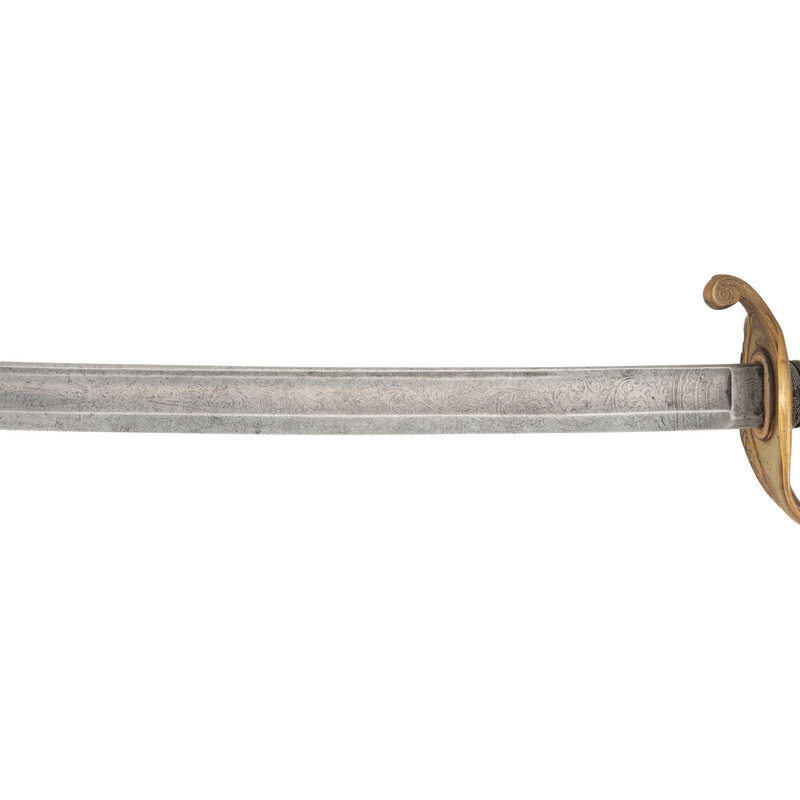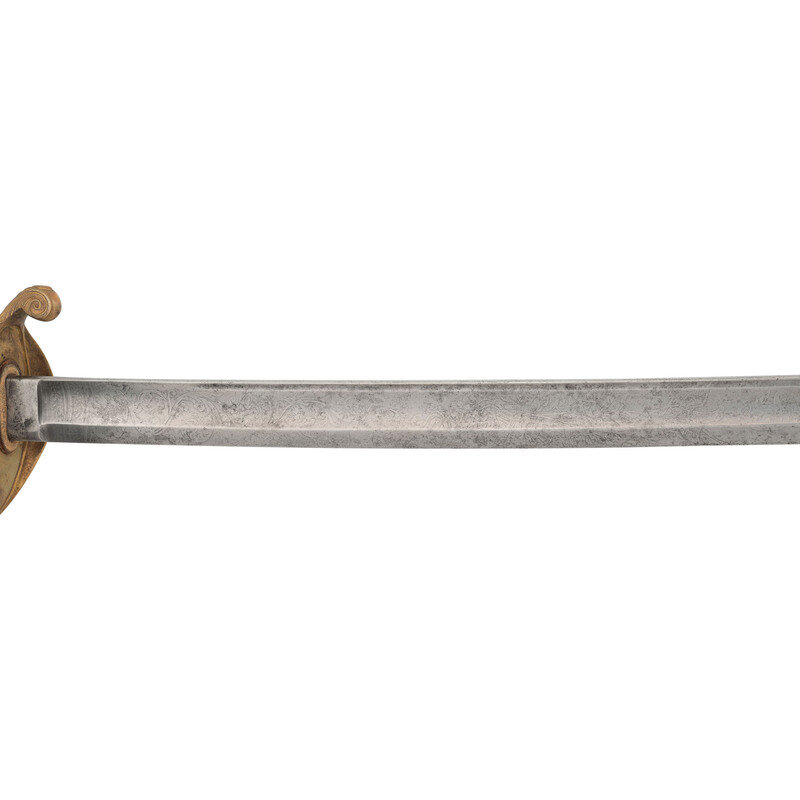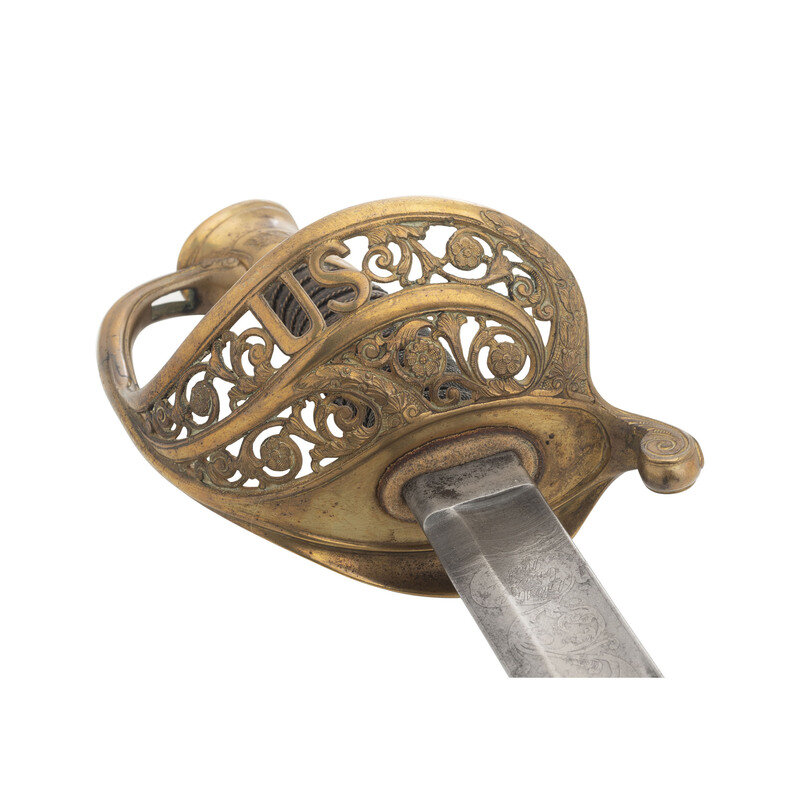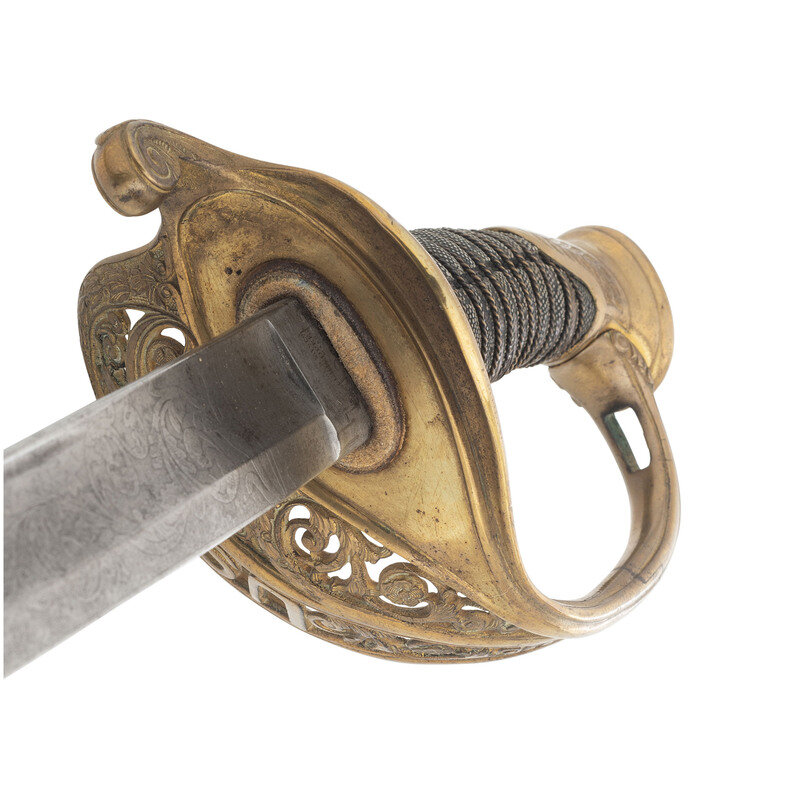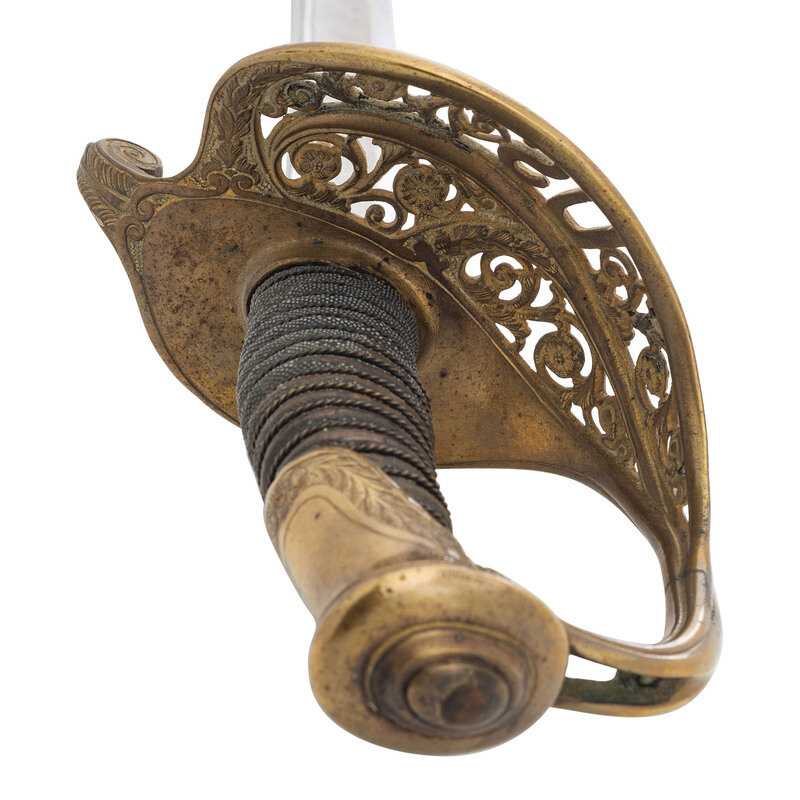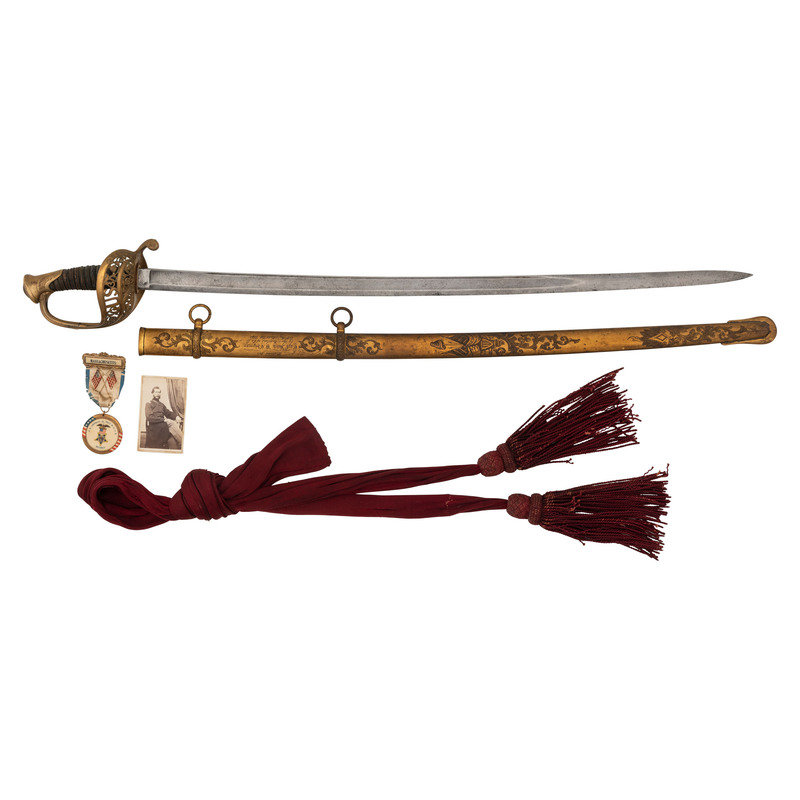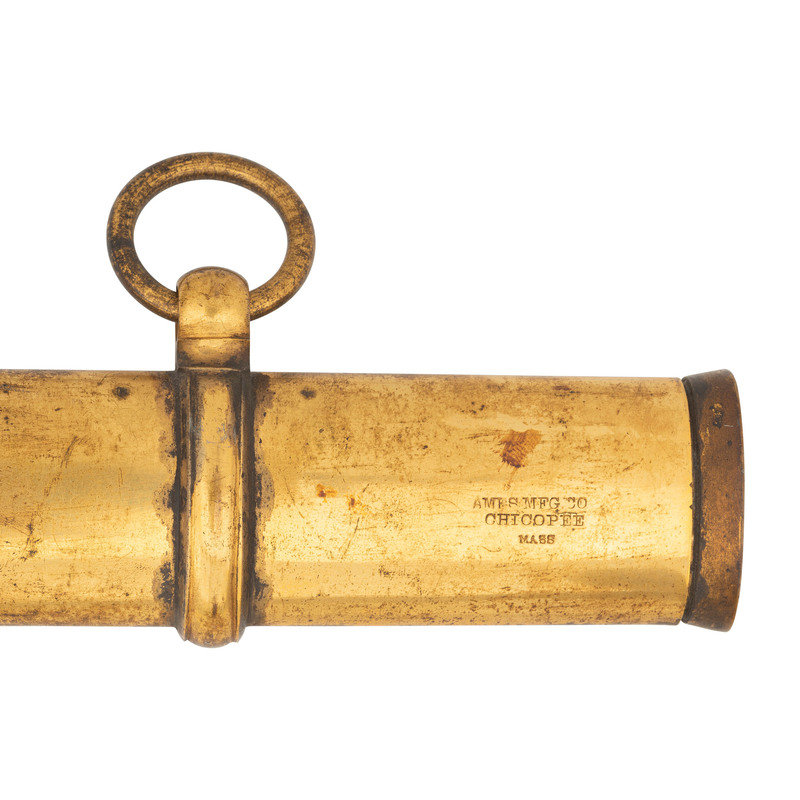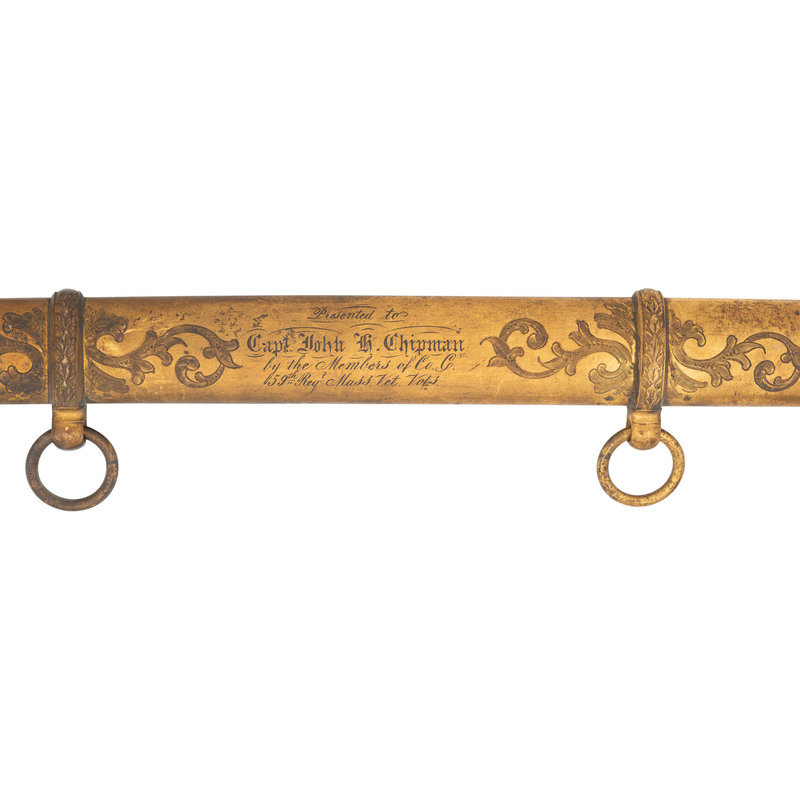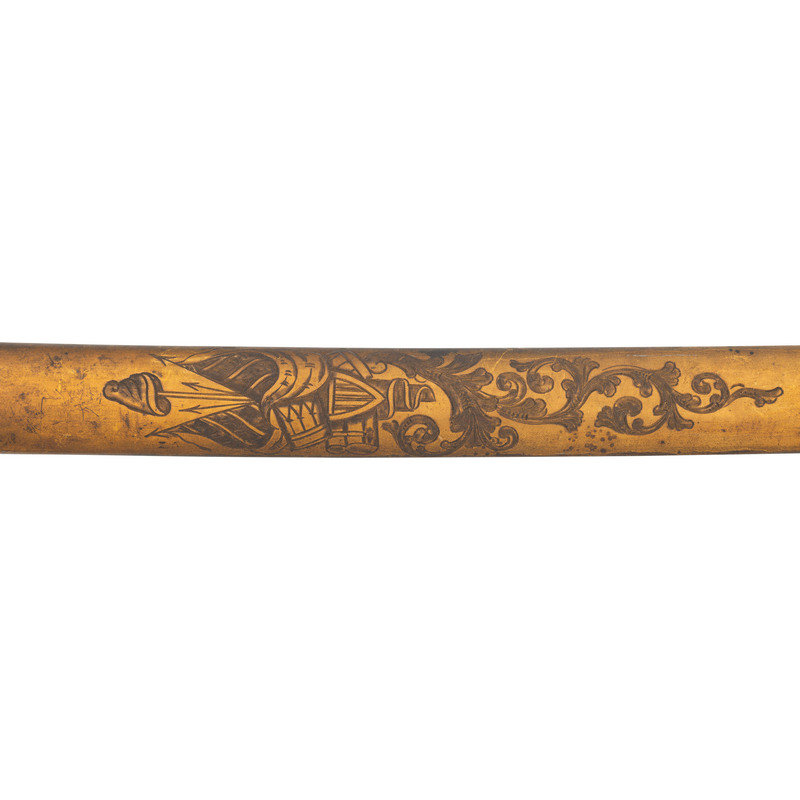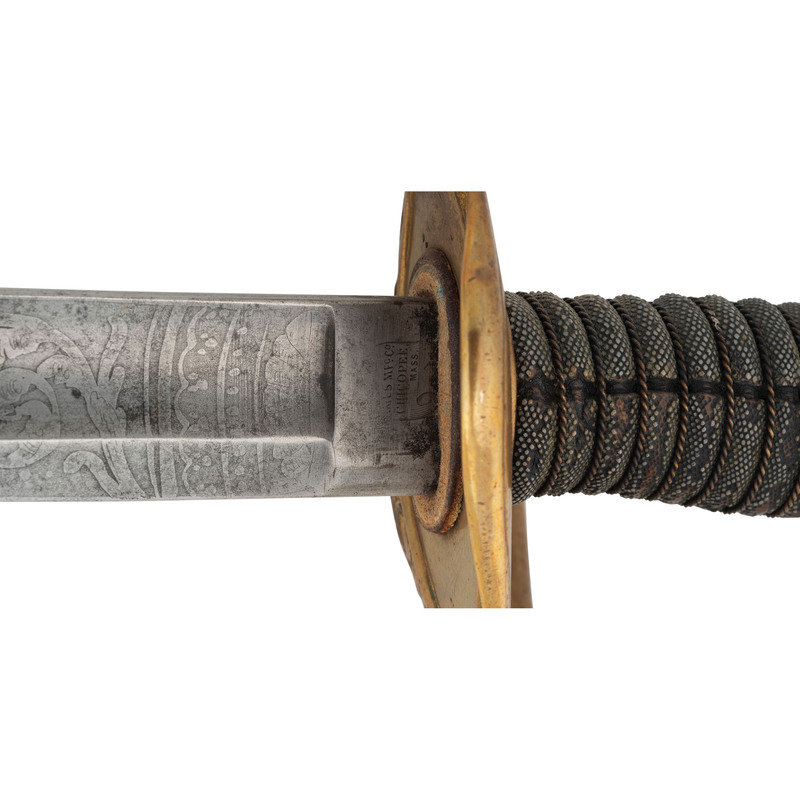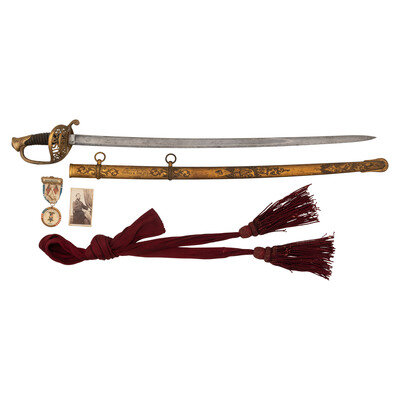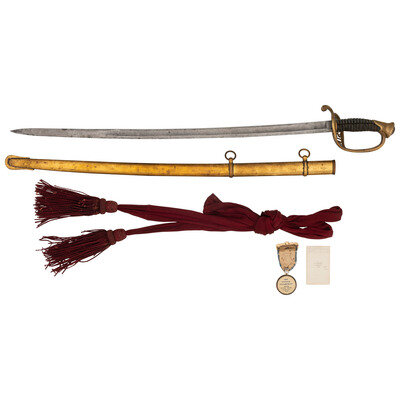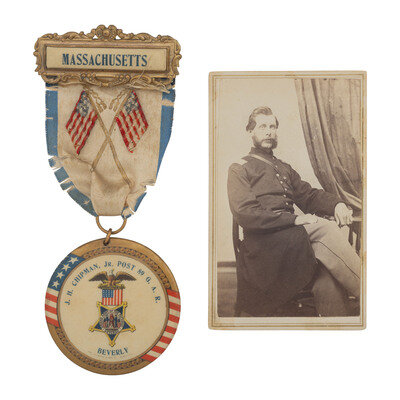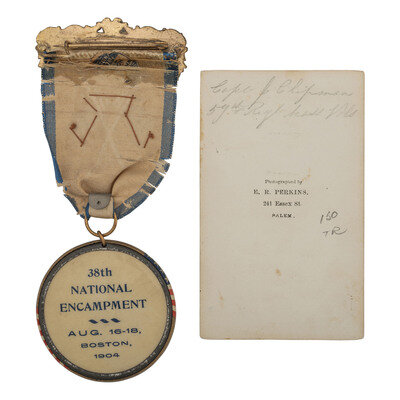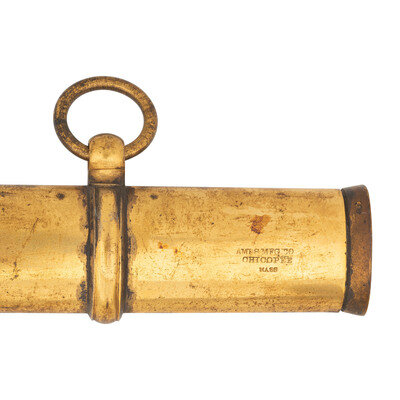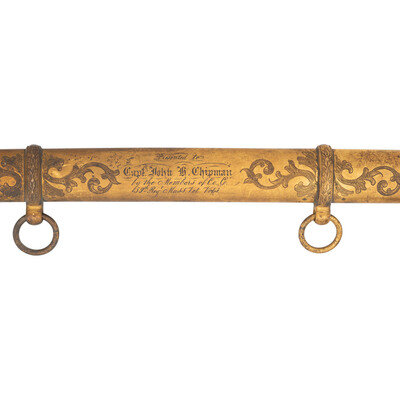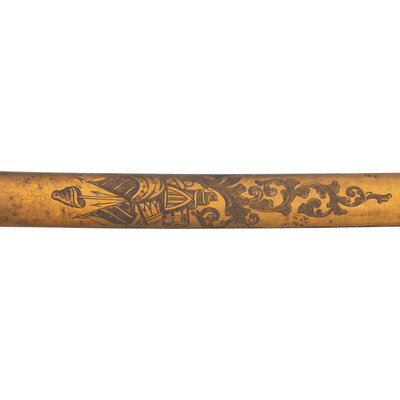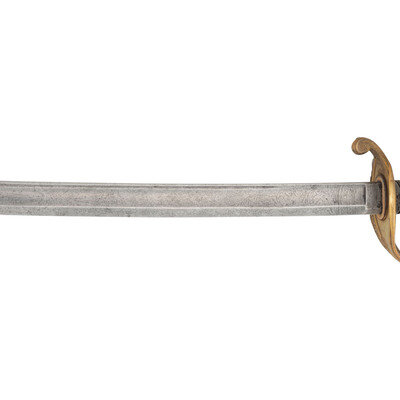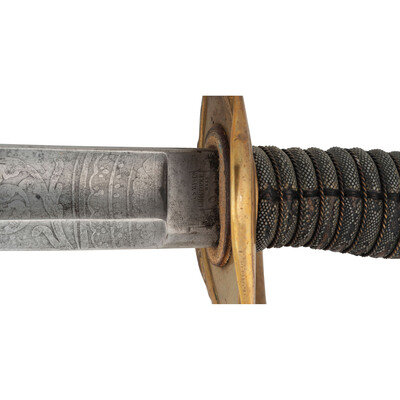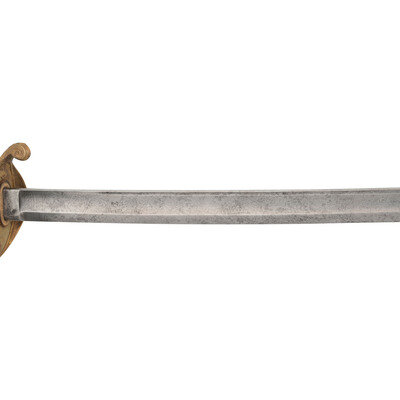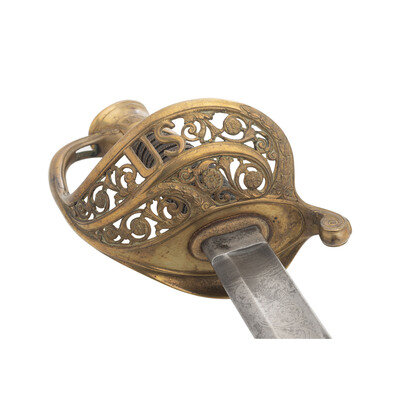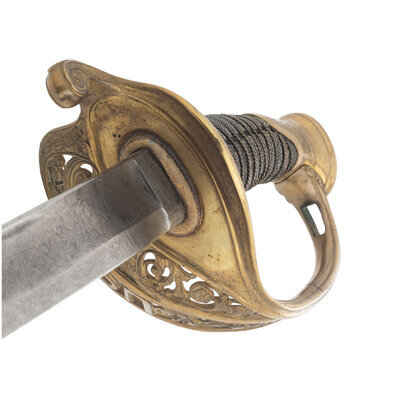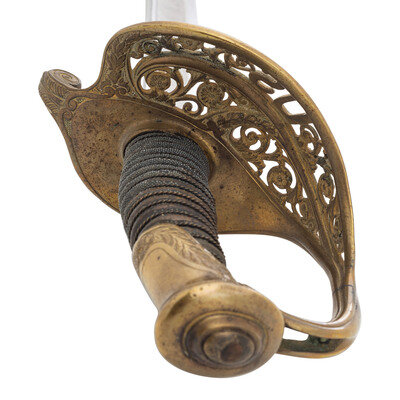32" slightly curved single-edged blade with a 22.25" stopped median fuller. Blade 1" wide at ricasso and with an additional 18" narrow fuller at the spine. 38" in overall length with a 6" hilt. Gilt brass guard with US in the face. Grooved wood grip with shagreen covering and 14 wraps of twisted wire. Obverse ricasso with etched Ames "scroll" address. Blade with 16" acid etched panels featuring foliate scrolls, patriotic and martial themes, a US on the reverse and an American Eagle with a ribbon reading E Pluribus Unum on the obverse. The sword is accompanied by the engraved gilt brass scabbard which is decorated with foliate scrolls and a large panoply of arms featuring a liberty cap. The scabbard is Ames marked on the reverse at the throat. On the obverse it is engraved between the two mounts, Presented to/Capt. John H Chipman/by the Members of Co. C./59th Regt. Mass. Vet. Vols. The sword is accompanied by Chipman's maroon sash, a studio portrait CDV of him seated and a celluloid Beverly, MA GAR "J.H. Chipman Jr." Post 89 badge with ribbon.
John H Chipman Jr. (1838-1866) was a 22-year-old shoemaker when he enlisted in the Massachusetts volunteers to fight for the Union on April 15, 1861. He had been a member of the pre-war Beverly Light Infantry militia company so it was not unexpected that he would immediately volunteer for service. On April 30 he was mustered into Company E of the 90-day 8th Massachusetts Volunteers Regiment, and was mustered out on August 1, 1861. In response to the call for 300,000 men from President Lincoln, the regiment was reconstituted in September and on the 17th Chipman was mustered into the reformed Company E of the 8th Mass Volunteers for 9 months of service, this time with the rank of corporal. The regiment spent most of that service in North Carolina, primarily in and around New Berne. He was mustered out on August 7, 1863.
On October 16, 1863 he was commissioned a 2nd lieutenant in Company C of the newly formed 59th Massachusetts Volunteer Infantry. While on his initial duty with the regiment he developed the early signs of consumption and returned home briefly to recuperate. On December 16, 1963 Chipman was promoted to command of Company C as their captain. The 59th Mass saw their first combat during Grant's 1864 Overland Campaign, starting with the Battle of the Wilderness, followed by Spotsylvania, Totopotomoy Creek, Cold Harbor and then on to the Siege of Petersburg. On May 31, 1864 at Totopotomoy Creek, Chipman was wounded in his hand and returned home to recuperate. He returned to active duty at Petersburg around August 12, 1864 and at that time assumed command of the regiment on a temporary basis, as the colonel had recently lost a leg, the the lieutenant colonel had been killed and the major was home recuperating from wounds.
On August 18, 1864 while leading a reconnoissance along the Weldon Road, Chipman was captured by a Confederate ambush. He was stripped of his sword, belt and other personal items and accoutrements and somewhat unceremoniously conducted to Libby Prison. While confined at Libby he contracted typhoid fever. He was later moved to prisons in Danville, VA and eventually Salisbury, NC. Chipman was released on February 23, 1865 and went home to recuperate. However the consumption that had begun two years earlier had worsened and in his weakened state he only managed to survive for another 18 months, dying on June 16, 1866. The Beverly GAR Post #89 was named for Chipman. Somehow the scabbard of his presentation sword and the sash ended up back with the family and descended through it until at least the 1970s and possibly as late at the 1990s. The consignor reunited the sword and scabbard circa 1999. The sword is accompanied by a large binder of research and information about Chipman, his family lineage, copies of his service records, period references to the presentation of the sword to him by his company, copies of images and at least one original letter.

